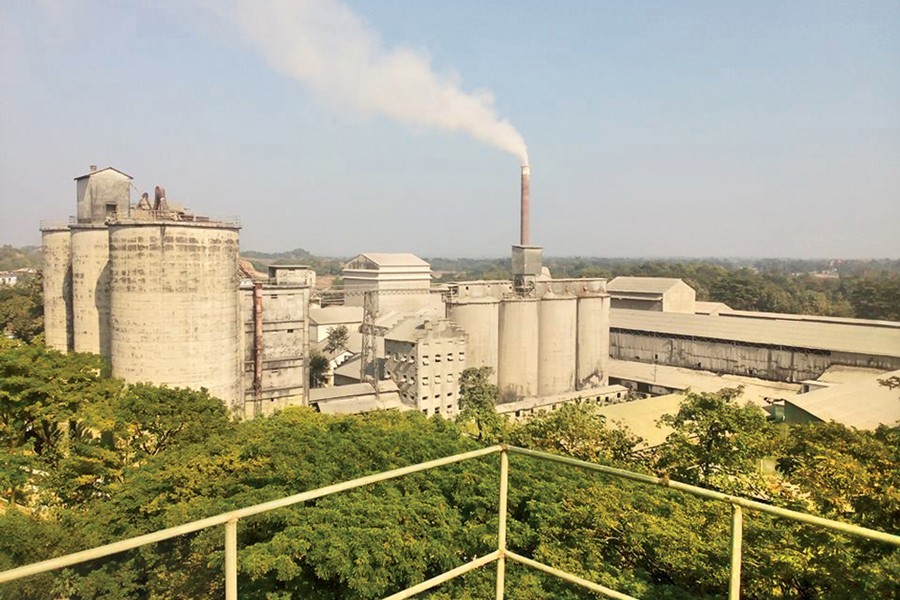The production in the decades-old Chhatak Cement Factory Limited has been falling for years, hurting the financial health of the state-owned firm, officials said.
Established during the British rule in 1941, the factory under the Bangladesh Chemical Industries Corporation (BCIC) had held major shares in the market of the key construction material until the 1990s.
But the trouble began soon as the company kept losing its market with the emergence of private sector rivals.
Today it cannot meet even a small fraction of domestic demand for cement, according to the industry people.
In the latter half of the last decade, the factory started witnessing losses, which were estimated at Tk 345 million during FY'19.
People familiar with its operations identified decades-old machinery, shortage of technical hands and apathy towards reinvestment as the factors behind the poor performance of the state-owned cement manufacturer.
Talking to the FE, managing director of the company FM Abdul Bari said they have been struggling to maintain production in the decades-old factory.
"The gas consumption rate is higher because of old technology. So, the production cost has been increasing gradually," he said.
Mr Bari, who joined the factory recently, said the highest production in its history was recorded during FY 2003-2004 after the second BMRE (balancing, modernisation rehabilitation and expansion) of the unit.
"During FY'19, the annual production came down to only 32,020 tonnes, which is very insignificant in terms of total domestic demand for 20 million tonnes" he said.
According to the factory sources, the production cost for cement rose to around Tk 16,000 a tonne, which is almost triple the standard expenses of around Tk 6,000.
Also, the average gas consumption for producing a tonne of cement is estimated to be 300 mmcf against the standard use of less than 100 mmcf.
When contacted, BCIC chairman Haiul Quaium said the growing financial losses of the age-old factory have become "a serious headache" for the corporation.
To reduce the burden, the corporation has taken up a project of Tk 8.91 billion to convert the unit into a dry processing cement making factory from the existing wet processing, he said.
Once it is completed, the factory's financial health will not only improve but also allow private companies to source clinkers from the state-run mill instead of relying on imports, he added.
Under the project, a total of 2000 tonnes of clinkers will be produced a day and 500 tonnes clinkers will be used in manufacturing cement while the rest will be sold to the privately-operated factories.
If executed, the project will help produce an estimated 495,000 tonnes of clinkers, a key material for producing cement, and 165,000 tonnes of cement each year.
The clinkers will be sold to private cement makers, who need 15 million tonnes of such materials to meet the annual domestic demand for 20 million tonnes of cement.
Nanjing C-HOPE Cement Engineering Group of China got the contract for reviving the ailing factory with the environment-friendly, energy-efficient and cost-effective technology.
Currently, a total of 489 people are working in different capacities against the positions of 1,014.


